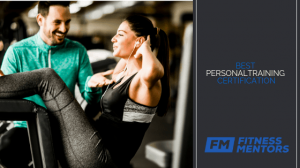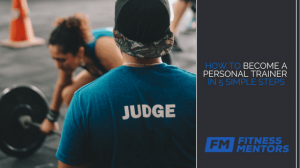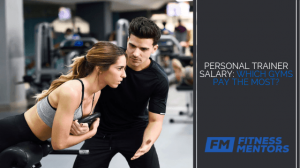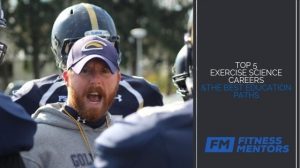NASM Reviews: Personal Trainer Certifications –
CES, FNS, PES, WLS, MMAS, GPT, YES, WFS, SFS, GFS
NASM Reviews
Certified Personal Trainer, CPT The NASM-CPT is the most widely chosen certification among fitness professionals, making it the most widely accepted in the industry. As a future personal trainer it is important to align yourself with the most reputable certification and we believe that NASM is just that, which is why we are giving you an objective way to learn about NASM reviews.
The way that you receive your CPT credential is by passing the NASM CPT Exam. This is done by learning the information from the NASM CPT Textbook that is most relevant to succeeding as a personal trainer. NASM will provide you with education packages ranging from $800 – $2500 dollars, but most people agree that their education is confusing, which is probably why the pass rate is at 79% (proctored/accredited) and 90% (non-proctored/non-accredited).
The best and least expensive way to pass their exam and learn the information you need to be successful, is by taking our Free NASM Study Course (we use to charge $500 for this course) and then purchasing the exam and textbook separately. Our course goes into specific detail regarding what makes it onto the test so you can better prepare yourself for what to expect. The course also adds real world experiences and examples that teach you how to use the material to train your clients more effectively. Whichever way you chose to learn, the NASM certification should be your top choice as it is accepted at almost any training facility.

Other NASM Reviews for Specialty Certifications
Extra Credentials are like super setting your favorite two body parts, it pumps you up! (insert Arnold voice). When you are already a NASM Certified Trainer, I highly recommend focusing your continuing education on sales or sticking with their other certifications, as they transfer to equal the amount of CEU’s you need to recertify (1.9 CEU’s + 0.1 CEU for CPR). When choosing your additional certs, think purpose. What credential is going to make you more valuable to the type of clientele you want to attract? Below is an honest breakdown:
Corrective Exercise Specialist, CES:
Train people in pain
The CES certification is far and away NASM’s best cert, as you will learn extremely applicable information. It forces you to understand origins of pain and how to fix it. My biggest concern with my training was learning how to always progress in strength, athleticism and body image, while avoiding any training associated injury. Here’s the truth, if you don’t have perfect flexibility and muscle balance, you are on your way to finding injury. In the CES materials you learn about all the mobility issues that can lead to these injuries. Beyond this, the value you can build knowing and understanding your clients’ pain is immense. Imagine you look at the most basic movement patterns of someone in their everyday life and are able to tell them about how their overactive Pec Major is giving them that shoulder pain they have been dealing with for months. They are blown away. Another great thing about this cert is that the test you have to pass, which is NASM’s hardest by far, makes sure you have completed your studies and understand these difficult topics. All of this combined makes the Corrective Exercise Specialist Certification a true educational experience that is held to the highest standard.
Certified Nutrition Coach, CNC:
With a huge mess of information out there on nutrition, it is extremely important to be able to differentiate the good from the bad. When put simply we can say things like, avoid processed food; eat whole foods; avoid Trans fats, but we need to understand why these things are important. The Certified Nutrition Coach by NASM takes a detailed college level textbook and goes to town on understanding everything you need to know about PRO, CHO and FAT, as well as all of the vitamins and minerals, what they do and where to get them. Although there is no definitive way to eat (some may argue otherwise), being able to analyze the true nutritional content of what you are eating and understand why you are eating it, the knowledge gained through the Certified Nutrition Coach will help you to boost your own and your clients’ fitness goals.
Performance Enhancement Specialist, PES:
Unless you are planning on focusing your fitness career in sports specific training or you are a competitive athlete yourself, the Performance Enhancement Specialist may be of little use. The market for sports training is not a large one, and typically caters to high school and college aged clientele, which usually don’t have room in their budget for private training. It’s not too frequent that business men come to personal trainers looking to become a better running back or shortstop. In review of what you are learning there are great things about the PES. Through the assessments chapter you are introduced to some great sports specific assessments that can expand your repertoire when considering performance as a goal. Also they have a great Olympic Lifting chapter that is essential to understand for improving explosiveness and power in sports that have those needs. Same goes for the plyometric chapter. If you like understanding concepts behind why these types of training will benefit athleticism, then the science based information throughout the book will be a great resource. Overall the PES is great, but remember it has a very specific and small market. Certifications to explore that will benefit your sports based training knowledge would be the USA-Weightlifting’s (USAW) Sports Performance Coach and National Strength and Conditioning Association’s (NSCA) Certified Strength and Conditioning Specialist. These certifications are very focused on the college and pro level setting and it would not be easy to carry out their training programs in your typical commercial gym.
Weight Loss Specialist, WLS:
I may sound a little harsh towards this certification, only because they beat the law of thermodynamics to death (calories in vs calories out). When will NASM jump off the government recommended nutrition band wagon and realized there is more to altering body composition; ie. Hormonal Optimization, Macronutrient Ratios, and eating low inflammatory profile foods to name a few. Unfortunately they don’t discuss any alternative methods to weight loss, and just repeat what you already know, to slightly more detail. I do have to say that having this title will make you sound great, but recognize your investment in furthering your education provides little return.
Mixed Martial Arts Specialist, MMAS:
Is this your target audience? Then get it. Similar to the Weight loss Specialist, if you expect to get great insight into how to train someone like MMA fighters you are understandably misled. Mixed Martial Artists are athletes and you are better off applying the PES principles to understand and program toward the demand of the sport, rather than take them through circuit training with added kicks, knees and elbows. I really only see this as a clever way to capitalize on the recent MMA influenced fitness training boom. Once again the education is lacking, so the title is all you’re really paying for.
Group Personal Training Specialist, GPT:
Did you know that no gyms require you to have this to train their group exercise classes? I can only see this benefiting you in a few ways; one of them being that you’re starting a boot camp or private group class and want to bring attention to the fact that you are qualified, and the other being that you really suck at training groups and you need more insight, which is unlikely. If you fall into one of these categories I guess you could try it?
Women’s Fitness Specialist, WFS:
If this is your target market, adding this certification may be of value. It dives a bit deeper into the uniqueness of female clients including monthly cycles and hormonal factors. Sounds okay but you decide. I will be waiting for the Men’s Fitness Specialist to arrive. Any day now…
Youth Exercise Specialist, YES:
Teach them how to play and perform speed, agility and quickness drills. Once again if this is your target market it may hold value. The special considerations for youth can be found in chapter 16 in the NASM Essentials of Personal Fitness Training Textbook. The additional information in this cert does not add to much benefit beyond what the basic standards are for youth training.
Senior Fitness Specialist, SFS:
Great title if this is your main focus for your business. Besides that your money is better spent on the CES, learning ways to address musculoskeletal pain.
Golf Fitness Specialist, GFS:
Do you already kick ass at golf? Is this your Target Market? I love golf. If you love golf this does provide some great baseline knowledge for you to build upon in the real world, but check out the Titleist Performance Institute if you are serious about getting to golf training.
Highly Recommended: CES, CNC, PES
Honorable Mention: MMAS, WLS


Convinced NASM is the way to go?
Your next steps for NASM certification:
- Get Fitness Mentors’ Free NASM CPT Study Course
- Begin Your Studies Using the Fitness Mentors’ 4 & 8-week Study Timeline
- Purchase NASM’s Cheapest Study Package Here
- Begin Your Career as a NASM Certified Personal Trainer!
Written by:
Eddie Lester BS, NASM-CPT, CES, PES, FNS, WLS, MMAS, GFS, YES, SFS

Five Secrets to Passing your NASM-CPT Exam
Featured Posts

How to Become a Personal Trainer in 5 Simple Steps

Personal Trainer in 2020

Personal Trainer Salary

Top 5 Exercise Science Careers




